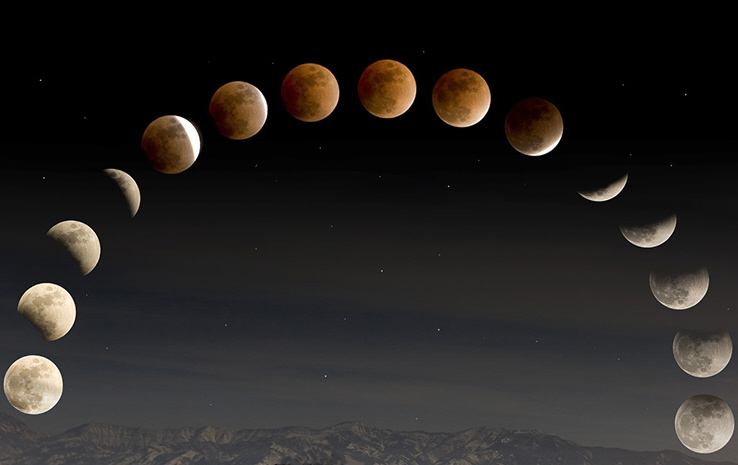Why Do They Call A Total Lunar Eclipse The Blood Moon?
 A complete Lunar Eclipse occurs only during a Full Moon. For the astronomical layman who has never viewed an eclipse it seems some of the online descriptions can be confusing. On the one hand the Moons eclipse is said to be similair in view to a solar eclipse in which the sun slowly disappears until nothing but a ring of list exists around a black circle. The black of the Suns eclipse being the result of the Moon moving between the Earth, and Sun. The Lunar Eclipse is also described as the Blood Moon due to the reddish hue it has. Some will say the Moon doesn’t really disappear like the Sun during it’s eclipse. If you’re confused then the answer is that both descriptions are true.
A complete Lunar Eclipse occurs only during a Full Moon. For the astronomical layman who has never viewed an eclipse it seems some of the online descriptions can be confusing. On the one hand the Moons eclipse is said to be similair in view to a solar eclipse in which the sun slowly disappears until nothing but a ring of list exists around a black circle. The black of the Suns eclipse being the result of the Moon moving between the Earth, and Sun. The Lunar Eclipse is also described as the Blood Moon due to the reddish hue it has. Some will say the Moon doesn’t really disappear like the Sun during it’s eclipse. If you’re confused then the answer is that both descriptions are true.
A Total Lunar Eclipse begins with the full bright Moon starting to disappear piece by piece as if it was going through all the phases it would go through in a complete month. You see the bright Moon in contrast to the black part which is no longer illuminated by the Sun as the Moon moves into Earth’s shadow. As it nearly disappears the black portions will begin to take on an orange to crimson hue due to scattered sunlight being cast upon it by edges of Earth’s atmosphere. Due to the Moons size, and distance from Earth it can’t completely escape the rays of the Sun. Eventually we see a full Moon that is red once it’s completely in the Earth’s shadow. This is where the name Blood Moon comes from. This is not to be confused with the Blood Moon of October.
As the Moon starts to move out of the Earth’s shadow the red color gives way to the black color again as we see a crescent Moon. The normal silver Moonlight returns going through the Moon phases again. By the end of the night we’re back to the full bright Moon. So we have something similair to a Solar Eclipse, minus the ring of bright light around a black disk, and also a Full red Blood Moon in the middle of the Moon’s eclipse. The entire process is illustrated in the image at the top of this page.
Information On The April 15th, 2014 Total Lunar Eclipse (The 1st Of Four In A Row Called The Tetrad)